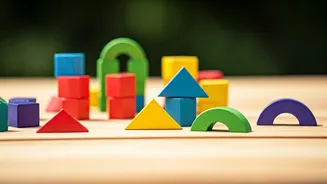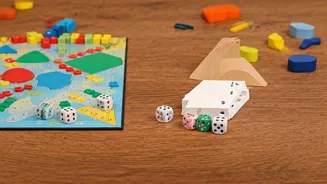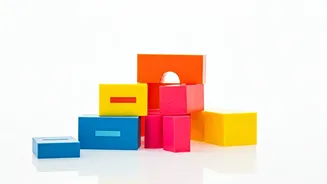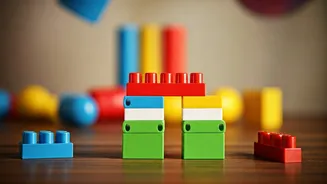Connect Math to Life
One of the most effective ways to make math appealing is to link it to the real world. Help your children see how math is present in everyday activities.
For example, when you're cooking, involve them in measuring ingredients, calculating quantities, and understanding fractions. When shopping, let them figure out the total cost, calculate discounts, and compare prices. When they can relate math to situations they encounter daily, they are more likely to see its relevance and importance, which can significantly boost their interest. This approach not only makes learning more practical but also demonstrates that math isn't just a subject confined to textbooks but a valuable tool for understanding the world.
Hands-On, Visual Learning
Encouraging a hands-on, visual approach to learning is crucial for making math accessible and engaging. Instead of just relying on abstract concepts, incorporate manipulatives like blocks, beads, or even everyday items. Allow children to physically manipulate these objects to solve problems. Use visual aids such as charts, diagrams, and colorful illustrations. For example, when teaching fractions, use pizza cutouts or paper strips to demonstrate how parts relate to the whole. This multi-sensory approach helps children grasp concepts more intuitively, especially if they are visual or kinesthetic learners. This method brings abstract concepts to life, making them easier to understand and remember.
Embrace Games, Puzzles
Transforming math into a playful activity is a great way to capture children's attention. Incorporate games, puzzles, and fun activities that make learning enjoyable. There are many board games and online resources specifically designed to teach mathematical concepts in a fun way. For example, games like Monopoly can teach money management, while puzzles and brain teasers enhance problem-solving skills. Encourage the use of math-related apps and online games that offer interactive learning experiences. Such activities reduce the pressure and make learning an enjoyable pastime, encouraging them to view math as an engaging challenge rather than a daunting subject. This also fosters a positive association with math, making them more receptive to learning.
Make it a Routine
Consistency is key when it comes to learning anything, including math. Establish a regular routine for practicing math, even if it's just for a short period each day. Setting aside a specific time, such as after school or before dinner, helps children develop a habit and a sense of structure. This routine could involve working through math problems, playing a math game, or reviewing concepts. Consistency ensures that children regularly engage with math, reinforcing their understanding and making it a natural part of their daily life. This helps in building a strong foundation, making it easier for them to grasp more complex concepts later on. Moreover, it prevents them from becoming overwhelmed by the subject.
Supportive Environment
Create a positive and supportive environment to foster your child's confidence in math. Avoid negative comments or criticism, and instead, focus on praising their efforts and celebrating their successes. When children feel safe and supported, they're more likely to take risks, ask questions, and embrace challenges. Encourage a growth mindset, where mistakes are seen as opportunities for learning rather than failures. Help them understand that it's okay not to know everything immediately and that practice and perseverance are crucial. Celebrate milestones and provide encouragement to build their self-esteem, which is essential for developing a positive attitude toward math and increasing their willingness to learn and explore new concepts.
Monitor Progress Regularly
Keeping track of your child's progress allows you to identify areas where they are excelling and where they might need additional support. Regularly review their work, discuss any challenges they're facing, and offer help or guidance. Use different methods to assess their understanding, such as quizzes, worksheets, or informal conversations about math concepts. By monitoring progress, you can adjust your approach and provide the specific resources or assistance needed to help them succeed. This could involve providing extra practice problems, seeking help from a tutor, or exploring different teaching methods. Recognizing and addressing challenges promptly can prevent frustration and keep them motivated, ensuring a positive learning experience.
Use Technology Wisely
Technology offers a wealth of resources for math learning. Utilize educational apps, online games, and digital tools to enhance your child's learning experience. Choose applications and websites that are age-appropriate, interactive, and aligned with your child's learning goals. These tools can provide personalized learning experiences, offer immediate feedback, and make math more engaging and fun. However, it's essential to use technology wisely. Balance screen time with other learning activities, and ensure that technology is used as a tool to support and enhance learning rather than replacing it. Supervise their online activities, and be involved in their learning process to help them navigate and benefit from the technology effectively.











